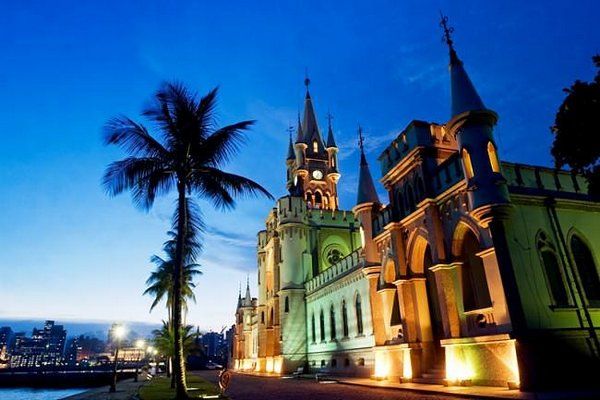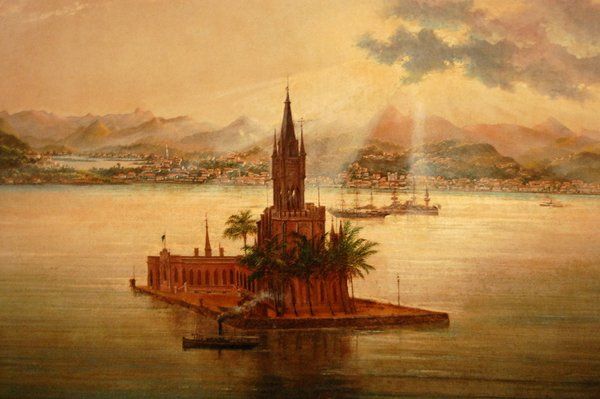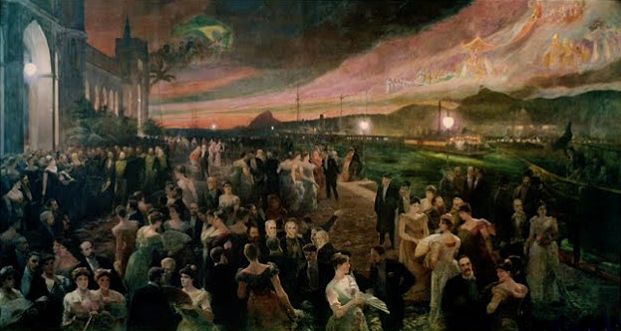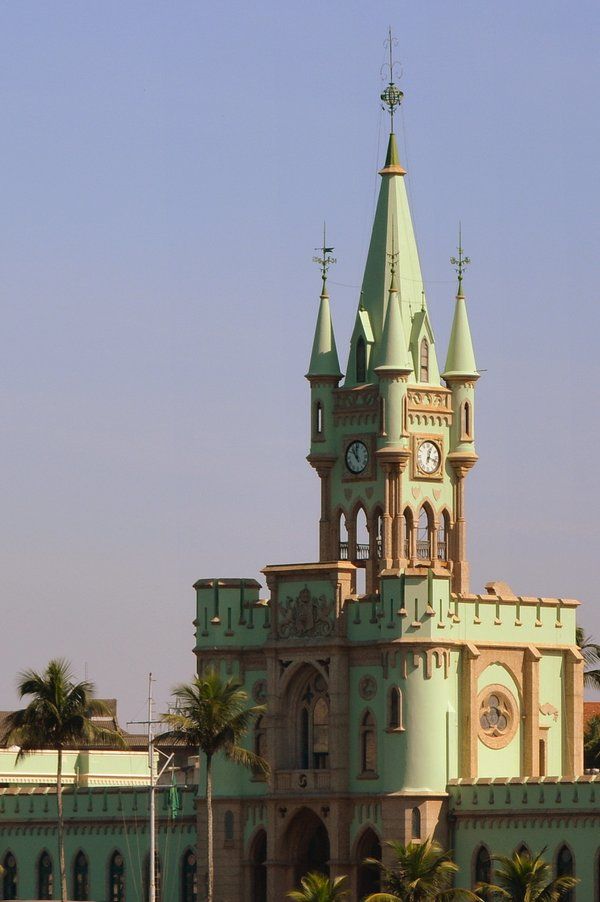Fiscal Island Palace

Beautifully restored and with a renewed illumination, the palace of the Fiscal Island (Ilha Fiscal), seems taken from a story. It was designed by the engineer Adolfo José del Veccio following the Provencal Gothic style of the 14th-century French buildings and is currently an important tourist attraction of Rio de Janeiro.
INDEX
A customs checkpoint

Formerly known as the island of mice (ilha dos Ratos), the island is called Fiscal Island because its palace was built to house the office of the Fiscal Guard (customs), taking advantage of the strategic location of the small island within the Guanabara Bay, very close to the mooring places of the ships that took or entered merchandise through the port of Rio de Janeiro.
At the end of the 19th century, the Minister of Finance requested the authorization of Emperor Don Pedro II for the construction of a customs post that facilitated the control of ships entering and leaving the port.
The work, which included the extension of the island to almost double its size by means of a series of terraces (filled with land gained from the sea), began on November 16, 1881 and was ready on April 27, 1889.
The last dance of the Empire

Shortly after the inauguration of the palace of the Fiscal Island, what happened to be known as “The last dance of the Empire” was celebrated in it. A great party organized by the emperor for almost five thousand guests in tribute to the crew of the Chilean battleship «Admiral Cochrane».
Although in addition to strengthening ties of friendship with Chile, the prestige of the Monarchy affected by republican ideas was sought, this was not achieved since only six days after the lavish party the Republic was proclaimed and Don Pedro II was forced to leave the country.
During the famous Revolt of the Navy of 1893 against the government of Marshal Floriano, the Fiscal Island was trapped for more than six months in the middle of the battle between the ships and fortresses loyal to each side. The damage suffered by the palace was considerable because the projectiles reached its walls and damaged stained glass, furniture and roofs.
In 1913 the Fiscal Island ceased to be part of the Ministry of Finance and passed to the Ministry of the Navy, housing different offices and addresses of said ministry over the years. In 2001, in coordination with the National Historical and Artistic Heritage Institute, important restoration work was carried out and the splendor of the old palace was recovered.
The Fiscal Island Palace

The Fiscal Island palace occupies approximately one third of the total size of the island and was considered from the outset as one of the most elegant buildings in Rio de Janeiro.
The delicate stonework work (carved stone) stands out on its facade, which has its maximum expression in the Empire Coat of Arms located above the main door.
In the tower, decorated with battlements and iron needles, there is a huge four-sided clock that works perfectly, which could be seen by ships from any point of the port and allowed to know the exact time.

Inside, the palace is rather sober, with painted walls of only one color, predominantly green-emerald, the color of the House of Braganza.
One of the most beautiful parts of the building is the tower with its mosaic floor made with 14 types of wood from Brazil; the stained-glass windows were made in England and represent Emperor Pedro II and Princess Isabel, with their corresponding genealogical blazons.
In addition to knowing the palace and the history of the Fiscal Island, the guided tours include two permanent exhibitions that show the social and scientific contributions made by the Brazilian Navy throughout its history.
Visit Fiscal Island
Guided tours schedule
Thursday to Sundays and holidays: 12:30, 14:00 and 15:30
Departures to the Fiscal Island are made by boats or by bus from the Cultural Space of the Navy (ECM) located on the Olympic Boulevard (near the Olympic torch), 20 minutes before the time of the visit.
Price of the guided tour
General public: R $ 30
Adults over 60 and children under 12: R $ 15
Ticket sales in the Cultural Space of the Marina (ECM) only on visiting days from 11:00 a.m. to 3:10 p.m.
How to get to the Fiscal Island
Access through the Cultural Space of the Marina – Av. Alfred Agache, Centro
Uruguaiana Metro – Lines 1 and 2 / Tram L2 Praça XV
Address: Avenida Alfredo Agache s / n – Center
Telephone: (+55 21) 2233 9165/2104 6992
Website: www.marinha.mil.br/dphdm/ilha-fiscal















